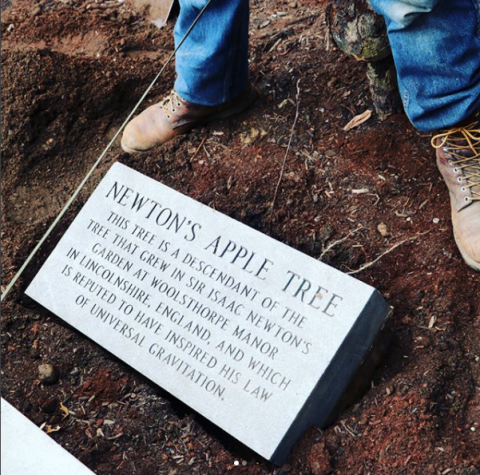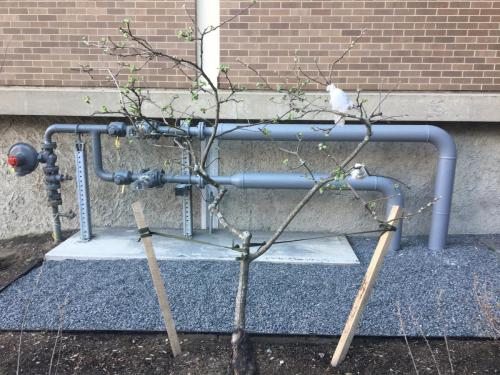 On Thursday, March 29, 2018, Brown Physics' descendant of the apple tree that sparked Isaac Newton’s principle of universal gravity was transplanted to its new, permanent home in front of the new Engineering Research Center.
On Thursday, March 29, 2018, Brown Physics' descendant of the apple tree that sparked Isaac Newton’s principle of universal gravity was transplanted to its new, permanent home in front of the new Engineering Research Center.
Professor Humphrey Maris acquired part of this tree for Brown's physics department and it was planted behind the Barus and Holley building in 2000. Construction of the new Applied Math building in 2014 temporarily necessitated the tree be moved temporarily in front of the Italian House on Hope Street.
Isaac Newton, the English mathematician, astronomer, theologian, author, and physicist is widely known as a crucial figure in the scientific revolution, crediting his work to the apple tree that has lied in the orchard at Woolsthorpe Manor for around 400 years. For at least 240 years, this tree has been referred to as the ‘gravity tree.’ After observing an apple fall from the tree, Newton questioned why the apples always fall straight to the ground. He began to consider and ponder why all things fall to the ground, rather than going un in the air or off to the side. He reasoned that there must be a power that causes this to happen, thus beginning his research on gravitational force.
Isaac Newton’s law of universal gravitation states that every mass in the Universe attracts every other mass, and the force between the two is proportional to the square of the separation between them. Newton’s law of universal gravitation extends beyond the Earth and applies to the whole universe.
 The famous tree can now be found at its new home in front of the Engineering Research Center. This tree serves as inspiration to the students and symbolizes curiosity, creativity, and innovation.
The famous tree can now be found at its new home in front of the Engineering Research Center. This tree serves as inspiration to the students and symbolizes curiosity, creativity, and innovation.